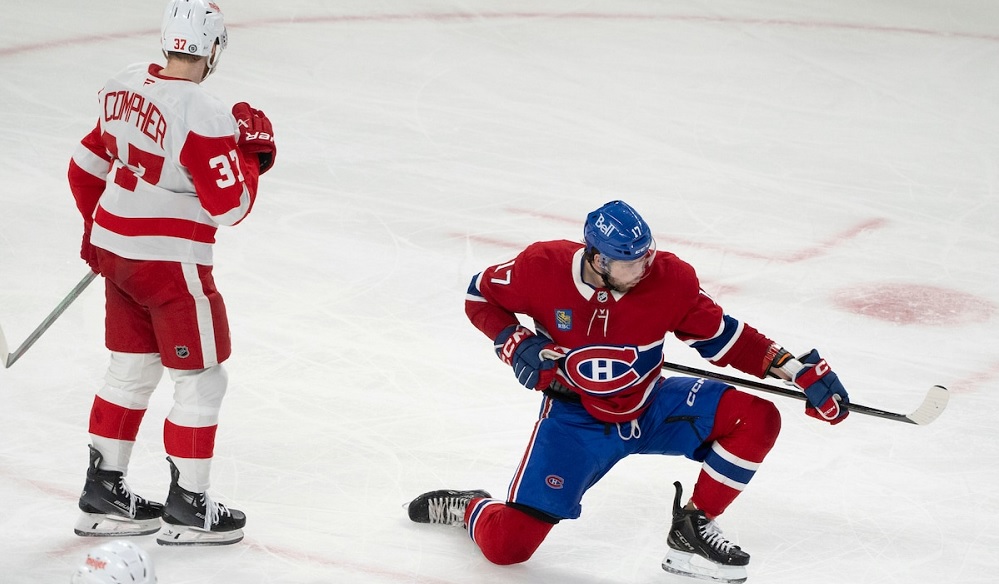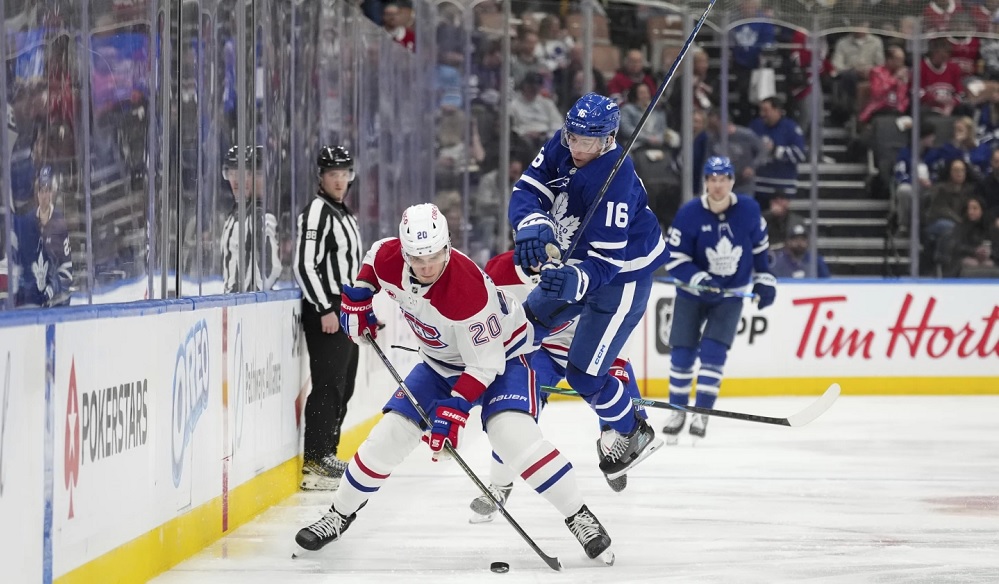HabsWorld.net --
Over the last four seasons, Canadiens captain Nick Suzuki has slowly but steadily increased his points-per-game average. Will this be the year he reaches the elusive point-per-game mark?
2023-24
Over the first half, Suzuki was the model of consistency for Montreal’s offence, scoring six goals while adding 11 assists in both the first and second quarters of the season. Even his shooting percentage was nearly identical – he took two more shots on goal in Q2.
While that’s not necessarily the type of top-line production the Habs would want to see from him, that type of game-to-game reliability is hard to come by. Aside from a four-game drought at the end of the second quarter, Suzuki didn’t go more than two games without a point in the rest of the first half of the season.
Late in the second quarter is when Juraj Slafkovsky moved up to the top line and after a few games, that trio took off and Suzuki was no exception. In the third quarter, his output jumped to 13 goals and 14 assists. He cooled off in the final stretch but still managed eight goals and eight assists, one point shy of the 17 he had in the first two quarters. Again, that consistency is impressive and hard to come by.
It’s worth noting in the second half that his shooting percentage in each quarter was at least 20%. While that’s not always the best way to judge things, considering his career average starts with a 13 (which is around where he was in the first half), it’s a sign that he might have had a bit of good luck in the second half. Another stat that stood out was his power play point total which checked in at a career-high 31, giving him a power play point percentage of over 40%. That’s also considerably higher than most top liners and is something to keep in mind.
Stats: 82 GP, 33-44-77, -14, 36 PIMS, 12 PPG, 1 GWG, 185 shots, 21:16 ATOI
5 Year Averages
(Stats for 2020-21 and 2021-22 are extrapolated to an 82-game rate.)
GP: 82
Goals: 23
Assists: 39
Points: 62
+/-: -16
PIMS: 29
PPG: 8
GWG: 2
Shots: 171
2024-25 Role
This one is pretty straightforward compared to a lot of Montreal forwards. There’s no reason to think that Suzuki won’t be on the top line at even strength to start the season. Even if they get creative with the wingers and try to balance the top two trios, Suzuki is going to anchor the top one. Barring an uncharacteristic extended struggle, that should be his spot for the entire season.
The same can be said for the power play. While Montreal should be able to run a second unit that actually has a bit of upside, Suzuki should be a full-timer on the top wave. Now, he might not be counted on to be as much of a shooter as he was a year ago with the man advantage, especially if they put all of Slafkovsky, Cole Caufield, and Patrik Laine with Suzuki on that top group.
Suzuki was on and off the penalty kill over the course of the season. If Christian Dvorak and Jake Evans are healthy, they should cover the first two waves, leaving Suzuki to handle spot duty or take a shift late in the game with the team trailing. He should still see around a minute a night but that’s not going to be enough to materially affect any of his stats.
Projected Stats
Given Suzuki’s continued improvement each year and the potential for a top line that produces like a typical top trio, there’s a temptation to project a big jump forward offensively. But those two factors I mentioned earlier – shooting percentage and power play point percentage – give me some pause.
Earlier in this series, we used xGF as a case to be optimistic about a rebound offensively for Josh Anderson as his actual output was way below the expected mark. For Suzuki last year, it was the opposite. Per MoneyPuck, Suzuki’s xGF last season was 21.8 compared to the 33 he actually potted. That’s a fairly significant difference. I also expect he might not shoot as much with Slafkovsky on his wing (or another shooter like Laine) for a full season. That has me thinking that the goal total will go down.
As for the power play point percentage, Suzuki was at 32.8% two years ago and 25.8% in 2022-23. Getting back to the 2021-22 rate is certainly doable and is more in line with where it should be, particularly on a team that might not be as inclined to lean so much on the top wave as they have lately. Again, that has me thinking that he’ll see a dip in power play points as well.
I think dips in those two categories will largely offset the projected gains at five-on-five with a stronger top line. So while the projected point total might seem a bit lower than it should, it shouldn’t be a negative if he winds up there as the sustainability will be higher, seemingly putting him in a spot to build off that and surpass the point per game mark in 2025-26.
His early ADP appears to be around 120 which is on the low side for someone who should be a safe bet for at least 70 points if he stays healthy. He’s a safe pick in all formats and every good team needs some safe players mixed in with their upside swings. Suzuki is definitely one of those.
GP: 82
Goals: 26
Assists: 54
Points: 80
+/-: -14
PIMS: 38
PPG: 7
GWG: 3
Shots: 168


